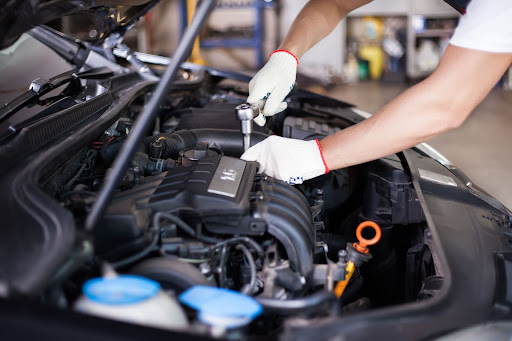Automotive security has actually seen an extraordinary improvement for many years. What started as simple crash protection actions has actually developed right into a complex system of sophisticated innovations created to prevent accidents and decrease injuries. Today, vehicles are equipped with a wide array of safety and security features, from basic seat belts to advanced vehicle driver assistance systems. In this article, we'll discover the development of automobile security attributes and just how these technologies have made driving safer for everybody when driving.
The Birth of Car Safety And Security: Seatbelts and Very Early Developments. The tale of automotive safety begins with the development of the seatbelt. It had not been up until the 1950s that safety came to be a focal factor for auto suppliers.
In the adhering to years, the vehicle market began to focus extra on resident defense. The introduction of crumple zones, locations of the car made to take in and dissipate the power from a crash, became prevalent in the 1970s. These areas, combined with more powerful security cages and reinforced frameworks, made autos more secure during accidents by reducing the force on travelers.

The 1980s and 1990s: Air Bags and Anti-lock Brakes. By the 1980s, airbags started to become an important security function. Airbags were installed for the chauffeur and front guest, using an additional layer of defense in the event of a collision. Gradually, side-impact air bags, drape airbags, and knee airbags were introduced, supplying even more thorough security for all passengers of the car.
The 1990s additionally brought the arrival of anti-lock stopping systems (ABDOMINAL MUSCLE), which helped stop the wheels from locking during hefty braking. This function substantially improved steering control and assisted vehicle drivers avoid crashes by reducing the chances of skidding. By the end of the 1990s, numerous lorries were additionally geared up with digital security control (ESC), which assisted motorists maintain control in unsafe conditions by immediately changing the brakes and engine power.

The 2000s and 2010s: Advanced Motorist Aid Solution (ADAS) As innovation advanced, the 2000s and 2010s saw the growth of an entire brand-new group of security features-- sophisticated driver aid systems (ADAS) These systems make use of sensing units, electronic cameras, and radar to aid vehicle drivers in stopping crashes. Functions such as lane separation warning, flexible cruise ship control, and blind-spot detection started to show up in vehicles, offering an extra layer of awareness for motorists.
Perhaps among one of the most impactful ADAS innovations is automatic emergency situation braking (AEB) This feature can identify a potential accident and instantly apply the brakes if the driver does not act in time. AEB has actually been verified to lower rear-end accidents and is currently a typical function in numerous brand-new cars.
Other noteworthy innovations include car parking sensing units, rearview cameras, and cross-traffic informs, all designed to assist vehicle drivers navigate even more securely in complex environments. These modern technologies intend to avoid mishaps prior to they take place, providing real-time aid to prevent collisions and improve overall driving safety.
The Future: Autonomous Automobiles and AI Safety And Security. Looking in advance, the future of vehicle security is connected to the development of autonomous lorries (AVs) and synthetic knowledge (AI) With developments in artificial intelligence and real-time information processing, self-governing vehicles are coming to be increasingly with the ability of navigating the roads without human input. Business like Tesla, Waymo, and others are making strides towards fully autonomous cars, which can remove human mistake-- the leading cause of accidents-- entirely.
Current semi-autonomous systems, such as Tesla's Autopilot and GM's Super Cruise, already offer hands-free driving assistance on highways, with integrated safety and security steps like adaptive cruise control, lane-keeping help, and emergency braking. In the future, AVs are anticipated to incorporate even more advanced safety and security functions, such as vehicle-to-vehicle (V2V) communication, where autos can "talk" to every various other to share details regarding road problems, web traffic, and potential dangers.
In addition, the function of AI in vehicle security will proceed to grow. AI-powered systems can analyze vast quantities of data in real time, making decisions much faster and a lot more precisely than human drivers. This will likely bring about also smarter safety systems qualified of protecting against accidents before they occur.
Conclusion: A Much Safer Roadway Ahead. The advancement of automobile safety attributes has made extraordinary strides because the intro of the seat belt. Today's cars are furnished with a vast array of modern technologies developed not just to safeguard travelers in the occasion of a crash yet to stop crashes from occurring in the very first location. As we look towards the future, the assimilation of self-governing vehicles and AI innovation guarantees also greater safety and security renovations. With these developments, we are relocating towards a world where road safety and security is substantially enhanced, and mishaps are lessened. The evolution of vehicle safety functions is a recurring trip, but something is clear: the future of driving is more secure than in the past.
Latest Posts
A Deep Dive into Genesis Car Financing: A Journey to Luxury Without the Hassle
Shop Cadillac at Modern Cadillac of Burlington for the Best Deals
A Very First Take a look at the 2025 Cadillac Escalade and Its New Attributes
Navigation
Latest Posts
A Deep Dive into Genesis Car Financing: A Journey to Luxury Without the Hassle
Shop Cadillac at Modern Cadillac of Burlington for the Best Deals
A Very First Take a look at the 2025 Cadillac Escalade and Its New Attributes